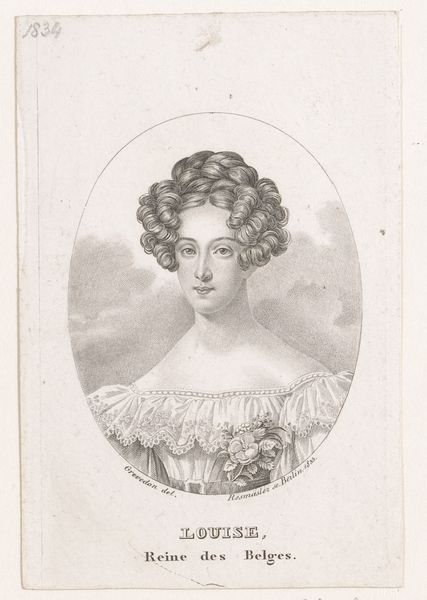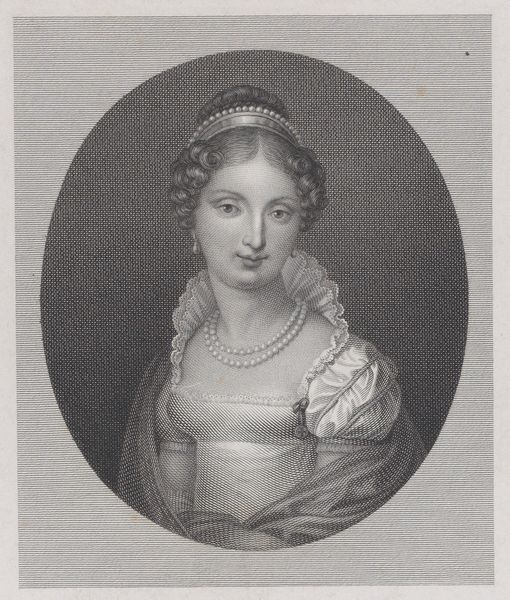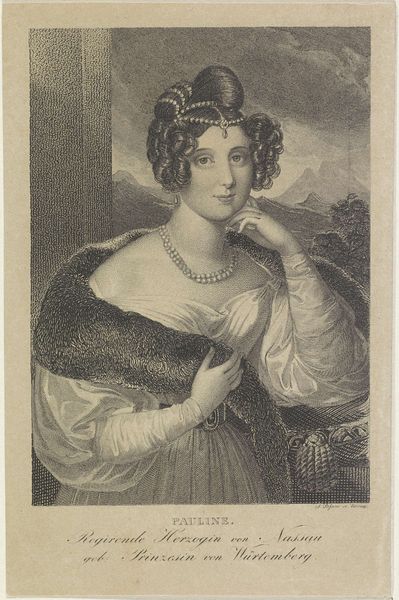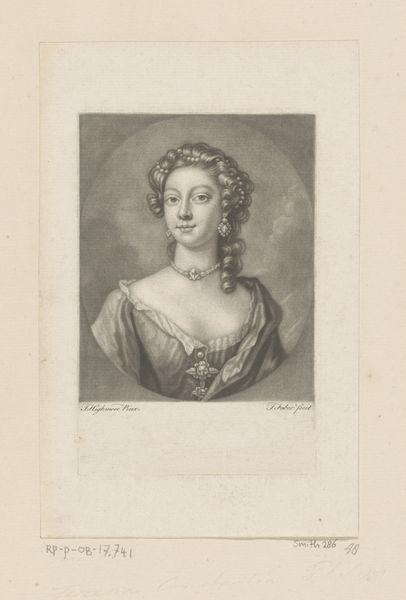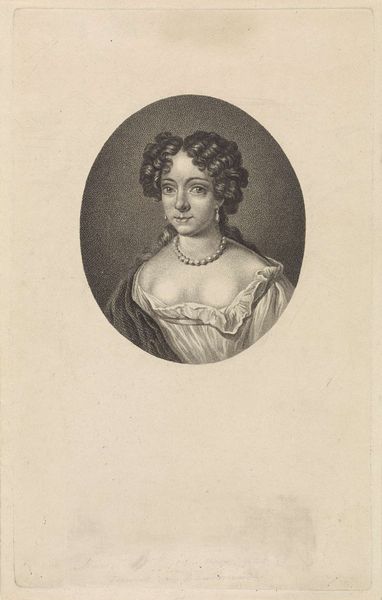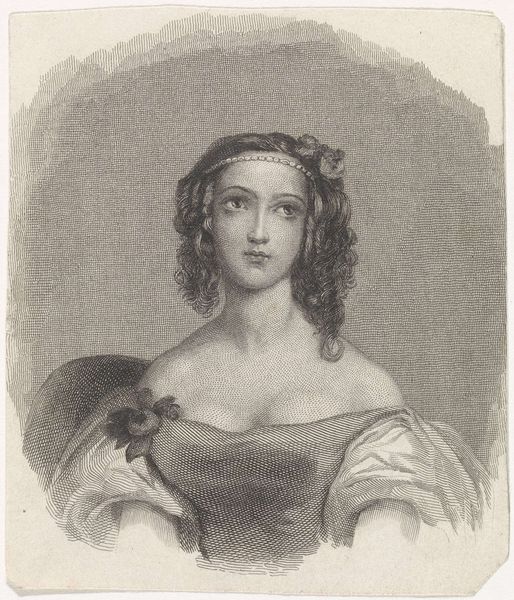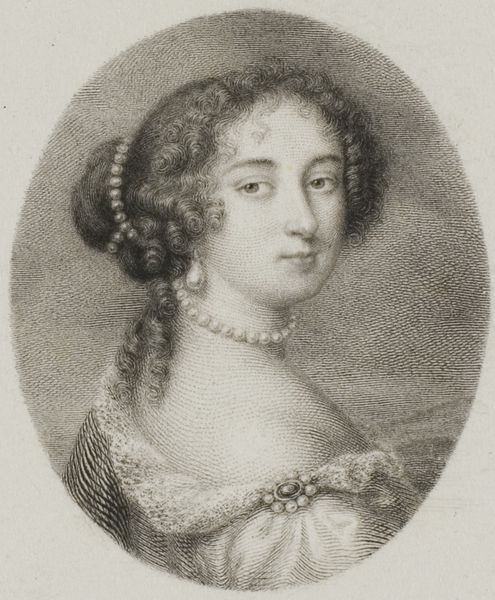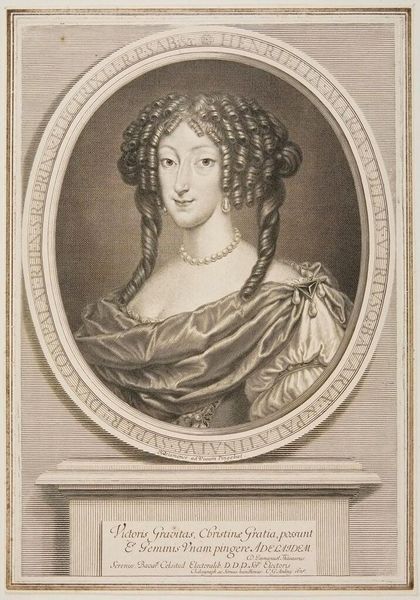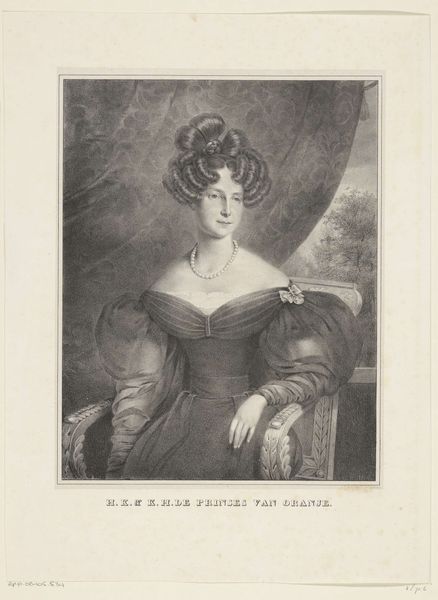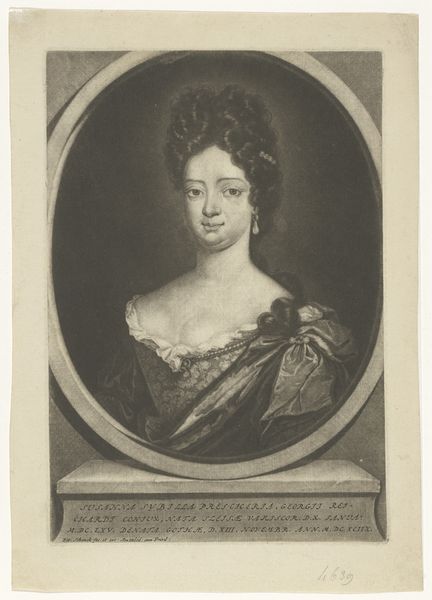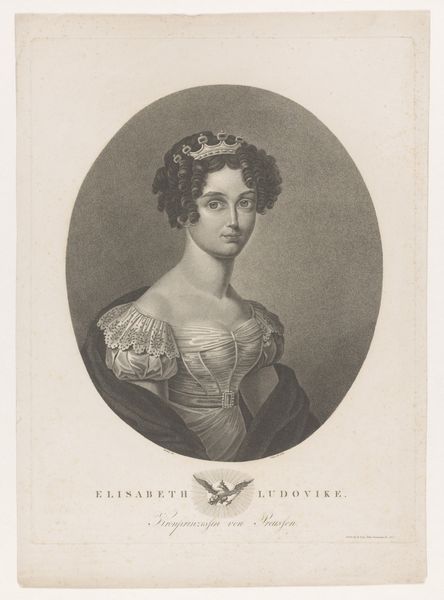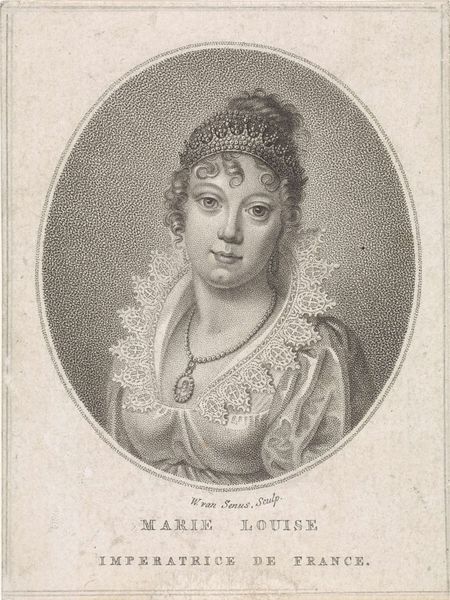
print, engraving
#
portrait
#
neoclacissism
# print
#
19th century
#
portrait drawing
#
engraving
Dimensions: height 113 mm, width 80 mm
Copyright: Rijks Museum: Open Domain
Franz Xaver Stöber created this print of Maria Elisabeth von Savoyen-Carignan using an unspecified technique. It’s now held in the Rijksmuseum. Images like this existed to disseminate status. Maria Elisabeth, or Franziska, was Vice-Queen of the Kingdom of Lombardy–Venetia, so this image speaks to the social and political structures of early 19th-century Europe. This was a time defined by monarchies and aristocratic power, and portraits played a key role in projecting that authority. Notice the detail in her clothing and jewelry, visual signifiers of wealth and status. The Kingdom of Lombardy–Venetia itself was a construct of the post-Napoleonic order, controlled by the Austrian Empire. Prints like this would have circulated within that specific court, reinforcing the legitimacy of Austrian rule and the position of figures like Maria Elisabeth within that system. To understand the print better, you might research the history of the Austrian Empire and the role of portraiture in aristocratic culture. By examining the social and institutional context, we can see how art served to uphold and propagate power.
Comments
No comments
Be the first to comment and join the conversation on the ultimate creative platform.
